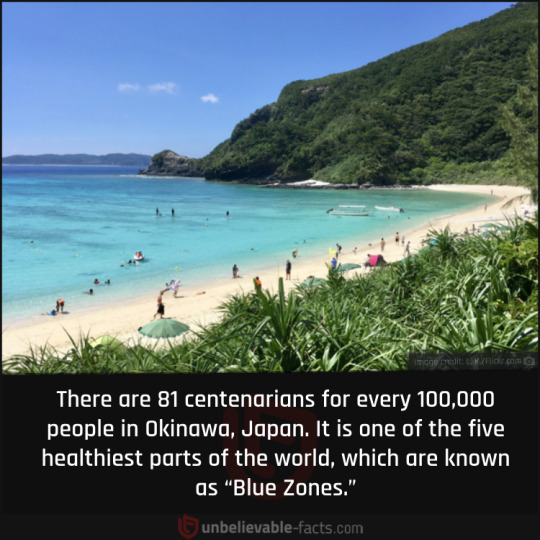#Blue zones
Text
it's astonishing watching the blue zones documentary on why we're not living long and healthy lives and seeing all the symptoms laid out and then they just never connect the dots or address why this is the case and how it's almost impossible to escape them when you're not isolated from society. oh we're stressed all the time and don't eat home cooked meals every day and don't meet up for exercise and don't spend time with our community and don't take long daily walks and don’t work in our garden and don't take care of our elders and don't own homes and don't have a sense of purpose or a positive outlook on life. i wonder why we don't do all of these things. i'm sure that living at our current stage of capitalism has nothing to do with it.
10 notes
·
View notes
Text

lifestyle habits that are shared by all of the world’s longest-living people
#Blue Zones#exercise#purpose#stress management#plant based diet#loving#family#positive#health#wellness#health and wellness#art of anti aging
24 notes
·
View notes
Text
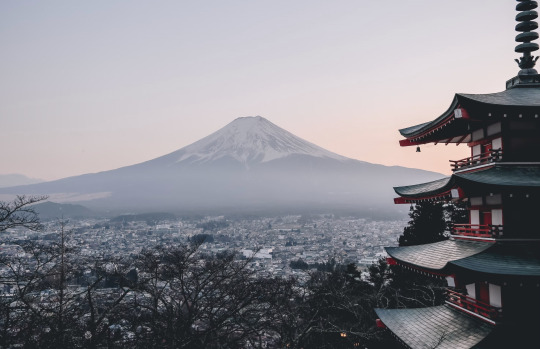
4 Japanese Concepts That Will Improve Your Well-Being
Embark on a journey to well-being with these four profound Japanese concepts: Ikigai for purpose, Moai for community, Hara Hachi Bu for mindful eating, and Kintsugi for resilience. Discover insights to a healthier and happier life in the modern world by embracing the ancient wisdom of Japanese culture.
Learn more here!
#wisdom#purpose#community#mindfulness#health#blue zones#long life#mental health#resilience#motivation#inspiration#ikigai#moai#kintsugi#hara hachi bu#japan#culture
13 notes
·
View notes
Text
Okinawa: The Island holds the secret to long life
Okinawa Island is one of the “Blue Zone” of longevity and it is also known as the “Island of longevity”. The Secret to a happy and long life is to eat healthy, exercise, and refrain from anger. The Okinawans are still a henchman at the age of 100. Okinawans eat vegetables and antioxidant foods. Here are some foods like Sweet potato, lettuce, fish, and tofu. They have little sugar intake and are eat in small plates.
In this world, everyone wants to live longer but does not want to eat healthily. If everyone wants to live longer then you must follow the unique diet and lifestyle imminently as Okinawans i.e., Plenary High carbs, vegetables, and less-intense exercises.
The Secret to a happy and long life:
Happy
Eat a healthy and rich diet.
Moai (meeting for a common purpose)
Ikigai (Reason of living)
10 notes
·
View notes
Text
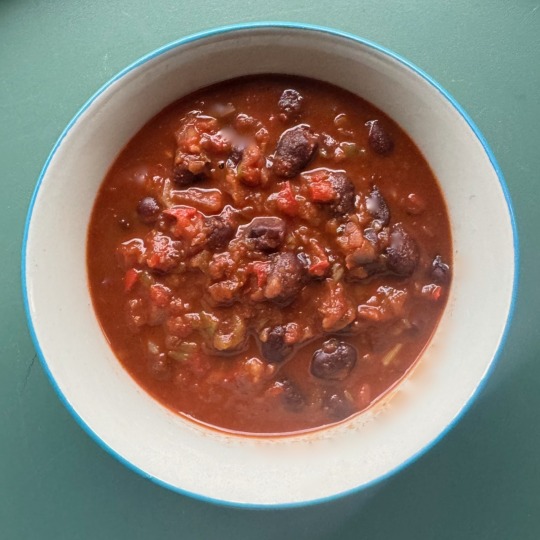
Black Bean Stew
Coarsely chop 1 red onion, 1 red pepper, and 1 green (or cubanelle) pepper and peel 7 garlic cloves*. Place in a food processor and finely chop (don't purée!).
Transfer half to a pot (freeze the remainder to use another time - or double up on the recipe), drizzle with 1 tbsp olive oil, and cook for 10 minutes on medium heat until soft.
Add 1/2 tsp each of dried oregano, smoked (or regular) paprika and cumin and stir to combine.
Add 1 tbsp chipotle in adobe paste, 20g dark chocolate (grated), 200ml canned tomatoes (or passata), and a tin (400g) of black beans (including the liquid). Stir and cook on a simmer for around 20 minutes.
Season with salt to taste.
Serve with rice.
* Optional: add a bunch of fresh coriander (chopped) to the food processor.
8 notes
·
View notes
Text



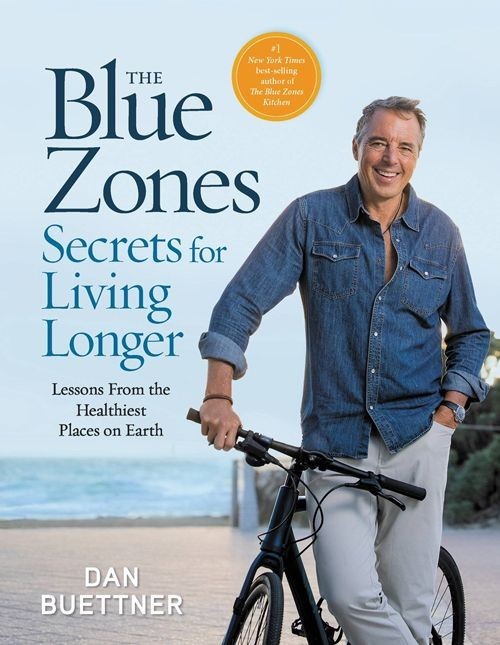

#Ikigai is a Japanese term that means “a reason to live."
It's a concept that encourages people to discover what truly matters to them and to live a life filled with purpose and joy.
The book Ikigai:The Japanese Secret to a Long and Happy Life by Francesc Miralles and Hector Garcia — is about the lives of the inhabitants of #Okinawa, #Japan with high number of centenarians which was also featured in the #Netflix docuseries Live to 100: Secrets of the #BlueZones (2023) based on Dan Buettner's book @BlueZones.
#HealthyAging #LiveBetterLonger #Longevity
#Ikigai#Reason to Live#Okinawa#Japan#centenarians#Netflix#Live to 100#Blue Zones#Healthy Aging#Live Better Longer#Longevity
2 notes
·
View notes
Text
Blue Zones Diet
The term 'Blue Zones' has been coined to refer to the places in the world with the healthiest, longest-living populations, including Okinawa; Japan, Sardinia, Italy; Nicoya, Costa Rica; Ikaria, Greece; and Loma Linda, California.
On the blue zones, people eat a wide variety of garden vegetables. The best longevity foods in the blue zones diet are leafy greens such as spinach, kale, beet and turnip tops, chard, and collards. Studies have found that middle-aged people who consumed the equivalent of a cup of cooked greens daily were half as likely to die in the next four years as those who ate no greens.
Researchers have also found that people who consumed a quarter pound of fruit daily (about an apple) were 60% less likely to die during the next four years than those who didn’t.
Many oils derive from plants, and they are all preferable to animal-based fats. Olive oil is the oil most often used in the blue zones diet and evidence shows that olive oil consumption increases good cholesterol and lowers bad cholesterol.
The following simple guidelines reflect how the world’s longest-lived people ate for most of their lives.
Here's a summary of the key points:
Plant-Based Diet
Some 95% of blue zone diets food come from a plant or a plant product with animal protein limited to no more than one small serving per day.
Emphasis on vegetables, fruits, beans, nuts, seeds, and whole grains;
Leafy greens like spinach and kale are highlighted;
Consuming a cup of cooked greens daily and a quarter pound of fruit daily has been linked to better health outcomes.
Studies have found that middle-aged people who consumed the equivalent of a cup of cooked greens daily were half as likely to die in the next four years as those who ate no greens. Researchers have also found that people who consumed a quarter pound of fruit daily (about an apple) were 60% less likely to die during the next four years than those who didn’t.
Many oils derive from plants, and are all preferable to animal-based fats. Olive oil is the oil most often used in the blue zones diet and evidence shows that olive oil consumption increases good cholesterol and lowers bad cholesterol.
Limit Animal Protein
Animal protein intake is restricted to small servings, with meat consumption limited to twice a week or less;
Fish is a common source of animal protein, consumed in small portions, usually two to three times per week;
Dairy products, particularly cow's milk, are minimised, with alternatives like sheep's or goat's milk products occasionally consumed.
Limit animal protein to twice a week or even less, in servings sized no more than two ounces cooked and avoid processed meats like bacon or sausages.
In most blue zones diets people ate small amounts of pork, chicken, or lamb, eating small amounts of meat, about two ounces or less at a time, about five times per month. Neither beef nor turkey figures significantly into the average blue zones diet. It is thought that any harmful effect was counterbalanced by other food and lifestyle choices.
Healthy Fats
Oils derived from plants, particularly olive oil, are preferred over animal-based fats;
Olive oil consumption is associated with improved cholesterol levels.
Moderate Egg Consumption
Eggs are eaten occasionally, typically two to four times per week;
Eggs from free-range chickens are preferred for their nutrient content.
Reduce Meat Consumption
Meat is consumed sparingly, about two ounces or less at a time, around five times per month;
Processed meats like bacon or sausages are avoided.
On the Blue Zone diet you can eat meat twice a week or even less in servings sized no more than two ounces cooked and avoid processed meats like bacon or sausages.
In most blue zones diets people ate small amounts of pork, chicken, or lamb, eating small amounts of meat, about two ounces or less at a time, about five times per month. Neither beef nor turkey figures significantly into the average blue zones diet. It is thought that any harmful effect was counterbalanced by other food and lifestyle choices.
Fish Consumption
Fish intake is encouraged, with small portions consumed regularly, about two to three times per week;
Emphasis on selecting fish that are common and abundant and not threatened by overfishing.
You can eat up to three ounces of fish daily which is equivalent to about the size of a deck of cards before it is cooked. Select fish that are common and abundant, not threatened by overfishing. In blue zones diets, fish is a common part of everyday meals, eaten on average two to three times a week.
Please consider ethical and health considerations involved in including fish in your diet. In the world’s blue zones, in most cases, the fish being eaten are small, relatively inexpensive fish such as sardines, anchovies, all species that are not exposed to the high levels of mercury or other chemicals that pollute gourmet fish supply today. People in the blue zones don’t overfish the waters. There is no blue zones diet evidence suggesting and any particular fish should be eaten.
Ethical and Health Considerations
For example:
Inclusion of small, relatively inexpensive fish species that are not exposed to high levels of pollutants;
No specific fish is recommended, and overfishing is avoided in Blue Zones.
Dairy Reduction
Minimisation of cow’s milk and dairy products due to lactose intolerance issues;
Calcium and protein are obtained from plant-based sources like kale or tofu.
Minimise your consumption of cow’s milk and dairy products such as cheese, cream and butter. Cow’s milk does not figure significantly in any blue zones diet. In terms of the human diet, dairy is a relative newcomer, introduced about 8,000 to 10,000 years ago. Our digestive systems are not optimised for milk or milk products and now we recognize that a significant number of people have some difficulty digesting lactose.
While western diets have relied on milk for calcium and protein for decades, in the blue zones diet people get these nutrients from plant-based sources such as kale or tofu, both of which provide as much calcium as a cup of milk.
Small amounts of sheep’s milk or goat’s milk product are eaten in a blue zones diet and goat’s and sheep’s milk products figure prominently in the traditional diets of both the Ikarian and Sardinian blue zones.
Eggs Consumption
Eggs are considered acceptable for consumption, providing complete protein and various essential nutrients;
Eggs from free-range chickens are preferred.
Eggs are consumed in all blue zones diets, where people eat them an average of two to four times per week. As with meat protein, the egg is a side dish, eaten alongside a larger portion of a whole-grain or other plant-based feature.
Eggs in the blue zones diet come from chickens that range freely, eat a wide variety of natural foods, do not receive hormones or antibiotics, and produce slowly matured eggs that are naturally higher in omega-3 fatty acids. Factory-produced eggs come to maturity about twice as fast as eggs laid by breeds of chickens in the blue zones.
Eggs provide a complete protein that includes amino acids necessary for your body plus B vitamins, vitamins A, D, and E, and minerals such as selenium.
Other foods on the Blue Zone diet include beans, nuts, sourdough bread. When it comes to beverages, you should drink between 6-8 glasses of water a day. It is okay to drink tea, coffee, and red wine in moderation
In summary
The key principles of the Blue Zones diet include focusing on plant-based foods, limiting animal protein intake, consuming fish in moderation, reducing dairy consumption and enjoying eggs occasionally. By following these simple guidelines inspired by the world's healthiest and longest-living populations, you can improve your overall health and well-being. (Source: bluezonescom)
For more inspirational, lifestyle blogs, please check out my site https://www.thecpdiary.com
#thecpdiary#blog#blue zones#bluezonesdiet#healthy#healthy diet#plantbasedprotein#healthylifestyle#healthyliving#health#longevity#nutrientdense#holisiticnutrition#healthandwellbeing#physical wellness
2 notes
·
View notes
Text
Why do Okinawans live longer?
OKINAWA
Okinawa is recognized as a “Blue Zone” of longevity
Situated in the Pacific Ocean about 400 miles from the Japanese mainland, Okinawa is the fifth-largest island in the country. Okinawa is recognized as a “Blue Zone” of longevity.
Two main factors of Okinawans longevity are Diet and Genetics. Almost all Okinawan centenarians grow or once grew a garden. It's a source of daily physical activity that exercises the body with a wide range of motion and helps reduce stress. They spend at least 2 hours in their garden.
DIET-
All centenarians ate for most of their lives 67% purple sweet potatoes and 12% rice. Okinawans consume very little rice. Instead, their main source of calories is the sweet potato, other greens vegetables followed by whole grains, and fiber-rich vegetables.
GENETICS-
About 25 percent of the variation in human life span is determined by genetics.
2 notes
·
View notes
Text
Sustainability Tip #17
The importance of eating local produce: earth, economy, longevity
Seasonal Fruits and Vegetables of Portugal
I saw this interesting poster hanging in a small neighborhood grocery store in Portugal. It reminds us of which fresh vegetables and fruit are in season. This chart, in turn, helps us with our meal planning. For multiple reasons, eating local seasonal produce is a more sustainable way to…
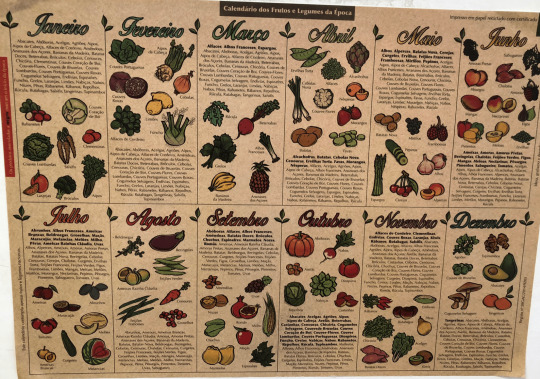
View On WordPress
4 notes
·
View notes
Text
Zones bleues : les secrets de ceux qui vivent jusqu’à 120 ans.
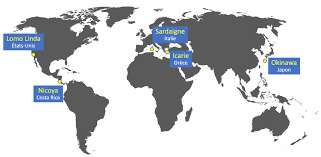
Dans certaines régions du monde, les gens vivent plus longtemps et en meilleure santé que la moyenne mondiale. Ces zones sont appelées « Zones Bleues ». A ce jour, on compte cinq zones bleues dans le monde : Sardaigne en Italie, l’île grecque d’Ikaria, Nicoya en Costa Rica, Loma Linda en Californie et la plus célèbre de tous : l’île d’Okinawa au Japon.
Mais quels sont vraiment les secrets de ces supercentenaires ?
Les habitants de ces régions partagent des modes de vie similaires. Ces derniers semblent être la clé de leur longévité.
1- Un régime alimentaire saine
Le régime alimentaire est l’un des facteurs les plus importants dans ces zones. Les habitants consomment des aliments naturels tels que des légumes, des fruits, des noix et des légumineuses. Les Okinawaïens par exemple consomment pratiquement tous les jours du tofu, du miso, du thon, des carottes, du goya qui est un légume amer, une variété d’algue appelée konbu, des choux, du nori (algue) et des pousses de soja.
2-Une activité physique régulière
Dans les zones bleues, les gens se déplacent régulièrement à pied ou à vélo. Ils sont aussi souvent engagés dans des travaux manuels.
D’après des études réalisées, les personnes qui vivent plus longtemps ne sont pas celles qui font du sport, mais celles qui bougent beaucoup.
3-Des liens forts
Une supercentenaire d’Okinawa a dit : « Je me lève à 5 heures du matin, je sors de chez moi et je descends au bord de la mer. Puis je vais chez une amie et nous prenons le thé. C’est le secret d’une longue vie : rejoindre les autres et bouger » (source : Ikigai, le secret des Japonais pour une vie longue et heureuse, écrit par Héctor Garcia & Francesc Miralles).
On voit clairement donc que les relations sociales et familiales sont également importantes. Les supercentenaires sont entourés d’une communauté qui les soutient et les aide dans les moments difficiles. Ils passent beaucoup de temps ensemble et sont engagés dans des activités sociales.
En conclusion, les zones bleues offrent un aperçu de ce que pourrait être un mode de vie sain et durable. En adoptant certaines habitudes des habitants des zones bleues, tels que les régimes alimentaires, les activités physiques et les relations sociales, nous pouvons améliorer notre santé et notre longévité.
Miguel Haydon
Image : Observatoire de la prévention
2 notes
·
View notes
Text
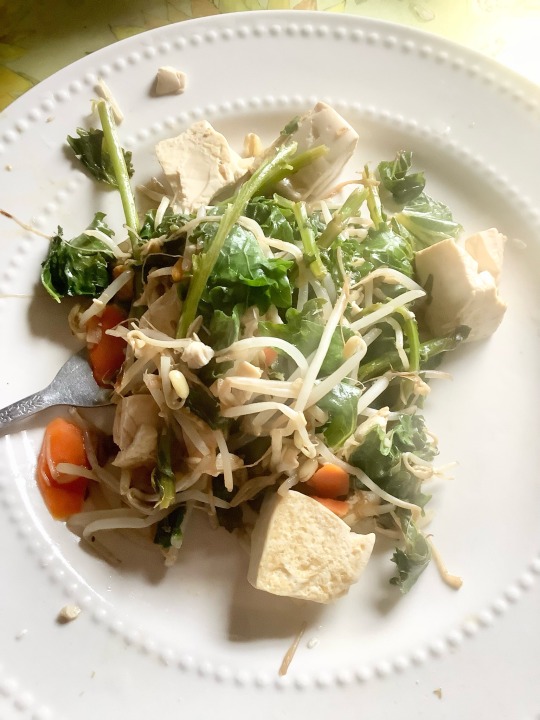
Veggie Champuru w/ organic kale from my kitchen garden. I’ve been kinda obsessed with that National Geographic Blue Zones cookbook that came out several years ago, and this tastes absolutely amazing. It’s crunchy and salty and chewy and warm, fresh, delicious.
#asianfood#blue zones#blue zone#nationalgeographic#danbuettner#veganfood#veganlife#organic#permaculture#live simply
2 notes
·
View notes
Text
Unveiling the Blue Zones: Discovering the Secrets to Longevity
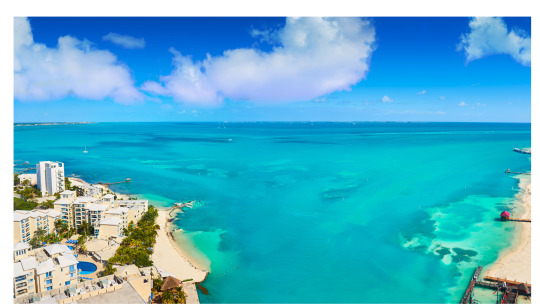
Have you ever wondered why certain communities around the world seem to defy the aging process and live exceptionally long, healthy lives? Join me as we explore the Blue Zones—regions where people experience remarkable longevity—and uncover the lifestyle and dietary factors that contribute to their exceptional health and vitality.
What are the Blue Zones?
The concept of Blue Zones was coined by National Geographic explorer Dan Buettner to describe regions with the highest concentrations of centenarians (individuals living to 100 and beyond). These regions include areas such as Okinawa (Japan), Sardinia (Italy), Ikaria (Greece), Nicoya Peninsula (Costa Rica), and Loma Linda (California, USA). What sets these communities apart? Let's dive into their lifestyle and dietary habits to unravel the secrets of longevity.
The Blue Zones Lifestyle: Keys to Longevity
Plant-Based Diet: Blue Zones inhabitants consume predominantly plant-based diets rich in vegetables, fruits, legumes, whole grains, and nuts. These foods are packed with nutrients, antioxidants, and fiber, supporting overall health and disease prevention.
Moderate Caloric Intake: Blue Zones residents practice mindful eating and avoid overeating. They prioritize quality over quantity, savoring meals with gratitude and moderation.
Physical Activity: Daily movement is woven into the fabric of life in Blue Zones. Whether it's gardening, walking, or engaging in traditional activities, regular physical activity promotes cardiovascular health, strength, and mobility.
Sense of Purpose: Blue Zones inhabitants cultivate strong social connections and a sense of purpose in life. They prioritize family, community, and meaningful relationships, which contribute to emotional well-being and longevity.
Stress Reduction: Managing stress is crucial in Blue Zones. Practices like meditation, relaxation, and spending time in nature help mitigate stress and promote resilience.
The Power of Community and Connection
One of the most significant factors contributing to longevity in Blue Zones is the emphasis on community and social connections. Regular social interactions, strong family bonds, and a sense of belonging contribute to emotional well-being and support overall health.
Bringing Blue Zones Wisdom into Our Lives
While we may not live in a designated Blue Zone, we can embrace the principles of longevity that these communities embody. By adopting a plant-rich diet, engaging in regular physical activity, nurturing social connections, and finding purpose in our lives, we can enhance our health and well-being.
Let's draw inspiration from the Blue Zones and embark on a journey towards greater health, vitality, and longevity. Together, we can incorporate these timeless principles into our lives and cultivate a future filled with health and happiness.
With longevity in mind,
Kimberli Almonla
Owner & CEO of Restoration Wellness
#health and wellness#nutrition#naturopathy#restoration wellness#healthy lifestyle#wellness#plantbased#blue zones#longevity#long life#natural medicine
0 notes
Text
0 notes
Video
youtube
KHÁM PHÁ BÍ MẬT VÙNG ĐẤT TRƯỜNG THỌ BLUE ZONES - ECO VILLA SÀI GÒN RIVER
0 notes
Text
Blue Zones: Centenarian Skincare Secrets
Beauty enthusiasts and researchers alike have turned their eyes toward the world’s Blue Zones—regions noted for their high concentration of centenarians and remarkably low rates of chronic diseases. These zones, which include regions like Okinawa in Japan, Sardinia in Italy, and Nicoya in Costa Rica, hold the secrets not just to longevity but also to ageless, radiant skin. This blog delves into…

View On WordPress
#anti-inflammatory diet#blue zones#centenarian#DIY skincare#herbal teas#holistic#holistic well-being#hydration#minimalist skincare#natural oils#natural skincare#nicoya#okinawa#sardinia#stress
0 notes
